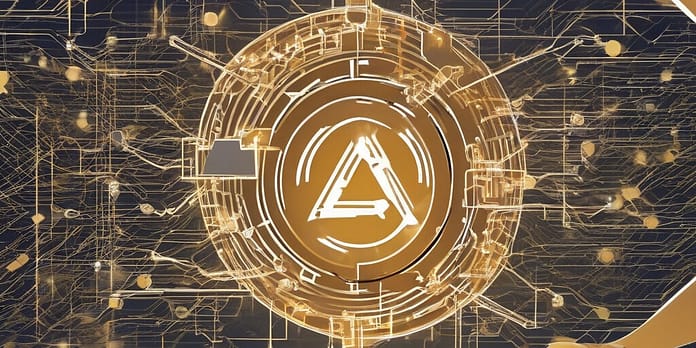Unveiling the Building Blocks: Understanding Blockchain
What is the underlying technology behind blockchain? Imagine a public record book, not owned by a single entity, but replicated and distributed across a vast network of computers. This distributed ledger is the essence of blockchain technology. Every transaction or piece of information added to the ledger is verified and cryptographically secured, making it tamper-proof and transparent.
Here’s a breakdown of the key components that power blockchain:
- Blocks: Think of these as individual pages in the record book. Each block holds a specific amount of data (transactions, records, etc.), along with a unique cryptographic fingerprint called a hash.
- Hashes: These act as digital signatures, ensuring data integrity. Any change to a block’s content alters its hash, alerting the network to a potential tampering attempt.
- Chain Reaction: Blocks are chronologically chained together. Each block references the hash of the previous block, creating an immutable chain. Altering a single block would require modifying all subsequent blocks, making it a near-impossible feat.
- Decentralization: Unlike traditional ledgers controlled by a central authority, a blockchain network distributes the ledger across numerous computers (nodes). This eliminates a single point of failure and promotes trust and transparency.
- Consensus Mechanism: This is the process by which nodes in the network agree on the validity of transactions and the addition of new blocks to the chain. Different blockchain implementations use various consensus mechanisms, like Proof of Work (PoW) or Proof of Stake (PoS).

Trust and Transparency: The Power of Blockchain
Blockchain’s core principles – decentralization, immutability, and transparency – offer significant advantages over traditional record-keeping methods.
- Enhanced Security: Cryptographic hashing and the distributed ledger structure make altering data on a blockchain incredibly difficult. This significantly reduces the risk of fraud and unauthorized modifications.
- Increased Transparency: All participants on the network can access a copy of the ledger, allowing for real-time verification of transactions and fostering trust in the system.
- Streamlined Processes: Blockchain automates many manual processes associated with record-keeping, leading to greater efficiency and reduced costs.
- Reduced Counterparty Risk: By eliminating the need for intermediaries, blockchain facilitates direct transactions between parties, minimizing the risk of default or fraud.
Beyond Bitcoin: Exploring Applications of Blockchain
While blockchain is most commonly associated with cryptocurrencies like Bitcoin, its potential extends far beyond the financial realm. Here are some exciting ways blockchain is transforming various industries:
- Supply Chain Management: Blockchain can track the movement of goods throughout the supply chain in real-time, ensuring transparency and eliminating counterfeit products.
- Voting Systems: Secure and transparent voting systems built on blockchain technology can reduce the risk of fraud and manipulation in elections.
- Intellectual Property Management: Blockchain can securely store and manage intellectual property rights, streamlining ownership verification and licensing processes.
- Healthcare: Securely storing and sharing medical records on a blockchain can improve patient data management and facilitate collaboration between healthcare providers.
- Government Services: Governments can leverage blockchain for efficient record-keeping, citizen identification, and land titling systems.
What is the underlying technology behind blockchain?
The Future of Blockchain: A World of Possibilities
More About Technology News Blockchain
Blockchain technology is still in its early stages of development, but its potential for disruption is undeniable. As research and development progress, we can expect to see even more innovative applications emerge across diverse industries.
Here are some potential future directions for blockchain:
- Scalability Solutions: Addressing scalability limitations is crucial for mainstream adoption. New consensus mechanisms and advancements in blockchain design aim to increase transaction processing speeds.
- Integration with Existing Systems: Seamless integration with existing infrastructure will be essential for widespread blockchain adoption.
- Regulation and Standards: Establishing clear regulations and industry standards will be crucial for fostering trust and promoting responsible development.
Embracing the Future: How You Can Get Involved in technology behind blockchain
Whether you’re a tech enthusiast, entrepreneur, or simply curious about the future, there are numerous ways to get involved with blockchain:
- Learn the Basics: Online courses, tutorials, and articles can equip you with a foundational understanding of blockchain technology.
- Explore Existing Applications: Research and experiment with current blockchain-based services to experience its functionalities firsthand.
- Invest in Blockchain Projects: Consider investing in reputable blockchain startups or cryptocurrencies with a long-term vision.
technology behind blockchain FAQs: Demystifying the Lingo
technology behind blockchain can be a complex topic, so here are some frequently asked questions (FAQs) to help you understand it better:
What is blockchain, in simple terms?
Imagine a shared record book, accessible to everyone on a network, where each entry is verified and secured. That’s the essence of blockchain. Transactions are recorded chronologically and cryptographically linked, making them almost impossible to tamper with.
Why is blockchain so secure?
Several factors contribute to blockchain’s security:
- Cryptography: Each transaction is cryptographically hashed, creating a unique fingerprint. Any change alters the hash, alerting the network to a potential tampering attempt.
- Decentralization: The ledger is distributed across numerous computers, eliminating a single point of failure and making it very difficult to hack.
- Consensus Mechanisms: These processes ensure all participants on the network agree on the validity of transactions, further strengthening security.
What are some real-world applications of blockchain?
While cryptocurrencies like Bitcoin are well-known, blockchain has broader applications:
- Supply Chain Management: Tracking goods efficiently, ensuring transparency and eliminating counterfeit products.
- Voting Systems: Secure and transparent voting systems can reduce fraud and improve trust in elections.
- Healthcare: Securely storing and sharing medical records can improve patient data management and collaboration.
- Financial Services: Streamlining transactions, reducing costs, and enabling new financial products.
Is blockchain the same as cryptocurrency?
No. Blockchain is the underlying technology, while cryptocurrency is a digital asset built on top of a blockchain. Bitcoin, for example, uses the Bitcoin blockchain.
Is blockchain going to revolutionize everything?
It has the potential to disrupt many industries, but it’s still evolving. Scalability, integration with existing systems, and regulations are key areas for further development.
How can I learn more about technology behind blockchain?
- Online courses and tutorials offer a good foundation.
- Explore existing blockchain applications and platforms.
- Read articles and news about blockchain developments.
Should I invest in blockchain?
Investing in any new technology carries risk. Thorough research and understanding the project’s goals are crucial before making any investment decisions.
This FAQ section provides a concise overview of key technology behind blockchain concepts and can be easily incorporated into your blog post to enhance user understanding.
More Technology News Visit www.abcexpress.pk
General Blockchain Resources:
- Blockchain.info: https://www.blockchain.com/explorer – A popular blockchain explorer that allows you to view transactions and blocks on various blockchain networks.
- Investopedia – Blockchain: https://www.investopedia.com/blockchain-4689765 – A comprehensive guide to blockchain technology from a trusted financial resource.
- Coinbase – Learn: https://www.coinbase.com/learn/crypto-basics – A user-friendly platform offering educational resources on various blockchain and cryptocurrency topics.
Understanding Blockchain Technology:
- Khan Academy – Bitcoin and Blockchain: https://www.khanacademy.org/economics-finance-domain/core-finance/money-and-banking/bitcoin/v/bitcoin-overview – A video tutorial explaining the basics of Bitcoin and blockchain technology in an easy-to-understand format.
- IBM Blockchain Basics: https://www.ibm.com/training/certification/ibm-certified-solution-advisor-blockchain-platform-v2-C0006001 – An interactive course from IBM that introduces key concepts like distributed ledgers, consensus mechanisms, and smart contracts.
- MIT OpenCourseware – Blockchain and Money: https://ocw.mit.edu/courses/15-s12-blockchain-and-money-fall-2018/ – Free course materials from MIT that delve deeper into the technical aspects of blockchain and its economic implications.
Specific Applications of Blockchain:
- World Economic Forum – Blockchain for Supply Chain Management: https://www.weforum.org/impact/blockchain-supply-chains/ – Explores how blockchain is transforming supply chain management practices.
- Healthcare Weekly – How Blockchain is Revolutionizing Healthcare: https://www.ncbi.nlm.nih.gov/pmc/articles/PMC8814929/ – Discusses the potential of blockchain for secure medical record keeping and data sharing in healthcare.
- Deloitte – Blockchain in Government: https://www2.deloitte.com/us/en/insights/industry/public-sector/understanding-basics-of-blockchain-in-government.html – Examines how governments are exploring blockchain for applications like citizen identification and land titling.
By incorporating these resources and your well-written content, you can create a valuable and informative blog post that effectively explains the underlying technology behind blockchain.

